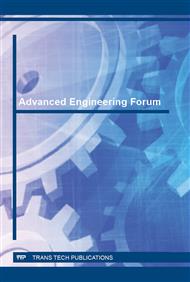p.3
p.19
p.23
p.29
p.36
p.46
p.59
p.67
Revivification of the Hard Alloys by Shock Waves
Abstract:
The purpose. To work out an efficient technology and develop production of supersolid metal-ceramic powders and tools of high quality from processed raw materials.Methods. To stimulate the processes of defect formation and destruction of tungsten containing alloys under conditions of the effect of high pressure gradients and loading rate revivified by shock waves of different intensity.Results. This is the first time explosion energy has been applied to grind hard alloys in cylindrical capsules compared to the traditional methods of recycling. The material obtained in the capsules of impact compression was exposed to finely dispersed structure refinement in drum-type grinding mills with duration 20 times as short as that for the current grinding technology which allowed decreasing energy consumption for grinding process by 7.75 megawatt for one aggregate onlyScientific novelty. Shock waves generated by detonation of condensed explosives have been originally used as tools to stimulate the processes of defect formation of cemented carbide alloys at different scale level. Conditions of preserving the shocked product in axial symmetry facilities has been developed and provided.Practical implications. The use of shock waves in the technology of hard alloy revivification is the only possible method of processing large-size solids with significant reduction of energy consumption and quality-assured production.
Info:
Periodical:
Pages:
19-22
Citation:
Online since:
October 2015
Authors:
Keywords:
Price:
Сopyright:
© 2016 Trans Tech Publications Ltd. All Rights Reserved
Share:
Citation:


